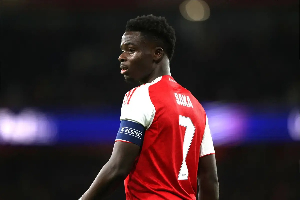Consumers paid N267.61 billion for electricity in the third quarter of 2023, the latest report from the Nigerian Electricity Regulatory Commission, NERC, has indicated.
NERC in its third quarter report released at the weekend disclosed that due to the absence of a cost reflective tariff, the Federal Government incurred a subsidy cost of N204.59 billion over the period.
According to the Commission, the total revenue collected by all DisCos in 2023/Q3 was N267.61billion out of the N349.55 billion that was billed to customers which translated to a collection efficiency of 76.56 percent.
“The DisCos overall collection efficiency increased by +1.02pp from 75.54% recorded in 2023/Q2. This is explained by the fact that although there was a marginal difference in total collections in 2023/Q3 (-0.09%) compared to 2023/Q2 (N267.86 billion), the total billings declined by -1.42% (compared to N354.61 billion in 2023/Q2)”.
The report revealed that all DisCos except Eko and Abuja recorded improvements in collection efficiency in 2023/Q3 compared to 2023/Q2.
NERC attributed the overall increase in collection efficiency in 2023/Q3 to the implementation of various collection campaigns by DisCos to improve remittance from post-paid customers.
“The most proven method for reducing collection losses is the installation of meters (especially prepaid meters for non-maximum demand customers). Therefore, DisCos are expected to utilise one or more metering frameworks provided for in the NERC MAP and NMMP metering regulation (2021) to improve end-use customer metering in their franchise area. This will reduce commercial and collection losses and will ensure the flow of funds to upstream market participants in the sector”, it added.
The report stated that due to the absence of cost-reflective tariffs across all DisCos, “the government incurred a subsidy obligation of N204.59 billion in 2023/Q3 (average of N68.20 billion per month), which is an increase of N69.37 billion (+51.30%) compared to the N135.23 billion (average of N45.08 billion per month) incurred in 2023/Q2”.
NERC pointed out that the rise in the government’s subsidy obligation meant that “in 2023/Q3, DisCos were only expected to cover 45 percent of the total invoice received from NBET. For ease of administration of the subsidy, the MRO is limited to NBET only with the MO being allowed to recover 100% of its revenue requirement from the DisCos”.
Power generation drops to 4,387MW
The report disclosed that average power generation during the third quarter decreased by 4.02 percent (-176.47MW) from the 4,387.91MW recorded in 2023/Q2 to 4,211.44MW.
“The decrease recorded was primarily driven by the reduced available capacity of 12 out of the 27 grid-connected power plants. Six out of the seven plants with the highest available capacity in 2023/Q2 (Egbin ST, Delta GS, Kainji, Odukpani, Okpai, and Afam VI) recorded decreases in their available generation capacities in 2023/Q3. The highest decreases in available capacity relative to 2023/Q2 were recorded by Odukpani and Okpai plants with -53% and -20% respectively”, it added.
NERC noted that the plant availability factor “is a critical parameter for evaluating the overall health of the upstream segment of the Nigerian Electricity Supply Industry, NESI. In 2023/Q3, the overall plant availability factor of all grid-connected plants was 33.31%; this means more than 2/3rd of the installed capacity in the NESI was not available. Only seven plants had availability factor > 50%. Azura IPP plant had the highest availability factor of 90.04% while Alaoji NIPP had the lowest availability factor of 0.20%”.
NESI stakeholders call for cost reflective tariff
Meanwhile, the Nigerian Electricity Supply Industry, NESI, have called for cost reflective tariff in the market, explaining that after 10 years of implementing the current Multi-Year Tariff Order, MYTO, it was time for a complete review of the tariff system.
In a communiqué issued at the weekend following the maiden edition of the NESI Market Participants and Stakeholders’ Roundtable in Abuja, the stakeholders noted that government continuing interventions in the market demonstrated a failed system.
The communiqué signed by Prof. Stephen Ogaji and Mr. Bode Fadipe stated that “NERC should implement a fair and cost-reflective tariff structure that encourages investment, ensures revenue sufficiency, and incentivizes efficient energy consumption.
“Cost reflective tariff should be treated as an output, not an input. DisCos should introduce energy efficiency programs and initiatives to encourage customers to adopt energy-saving practices and technologies. DisCos should expand the deployment of smart meters to improve billing accuracy, and revenue collection, and reduce electricity theft.
On the provision of meters, the stakeholders held that “one of the key responsibilities of every electricity utility company is the issue of revenue circle management that is metering, billing and collection. This is a model worldwide. The importance of accurate metering and customer-centric approaches was highlighted to improve billing accuracy, reduce losses, and enhance customer satisfaction.
“The best metering strategy is that which focuses on 100% metering, starting from city to city, like the strategy adopted by the mobile phone companies. Saturate city by city with meters and in no time, the country will have meters everywhere.
“Concentrating the initial rollout of meters and providing power to cities and industrial centers will require a review of the ATC&C losses since the recovery is expected to be over 100% at the high cost of paying customers”.
Business News of Sunday, 17 December 2023
Source: www.vanguardngr.com













